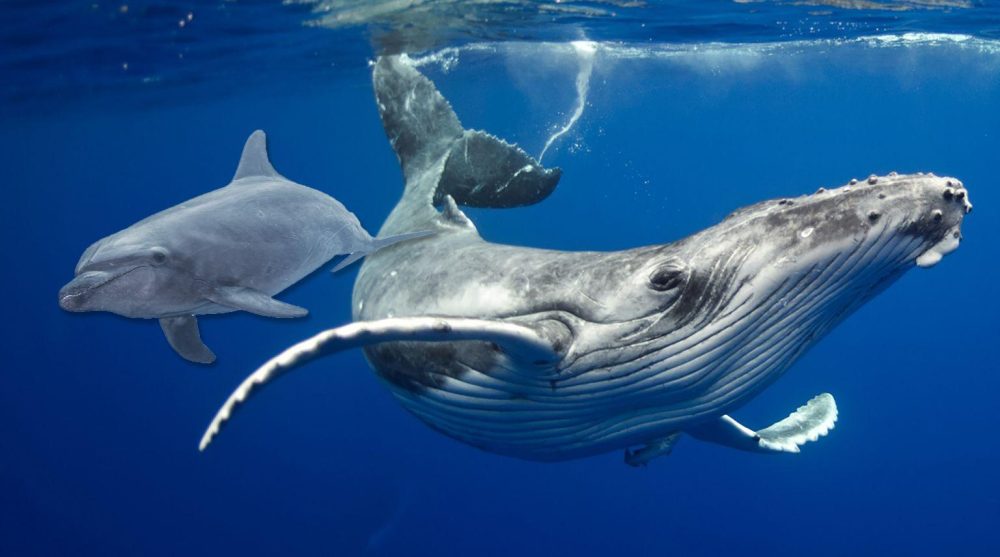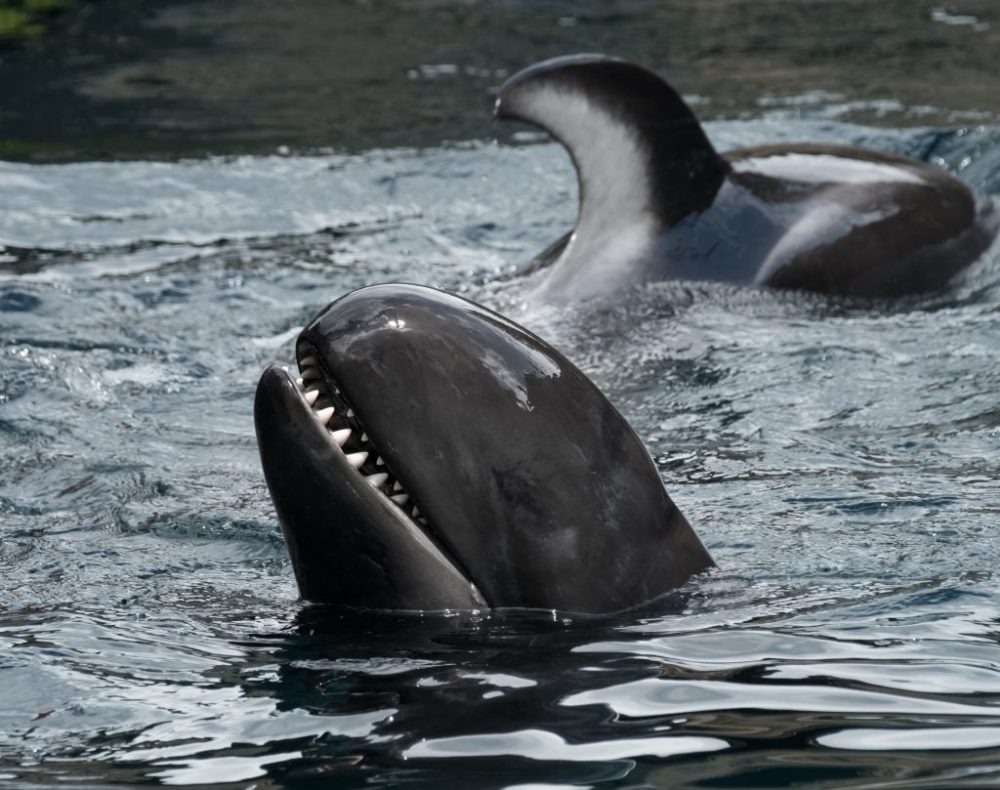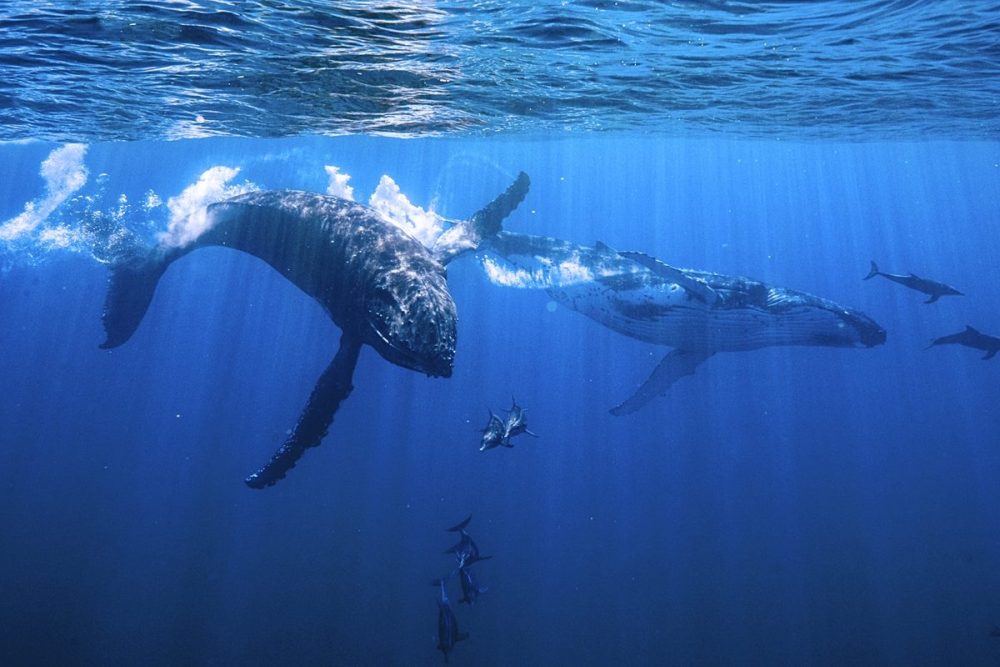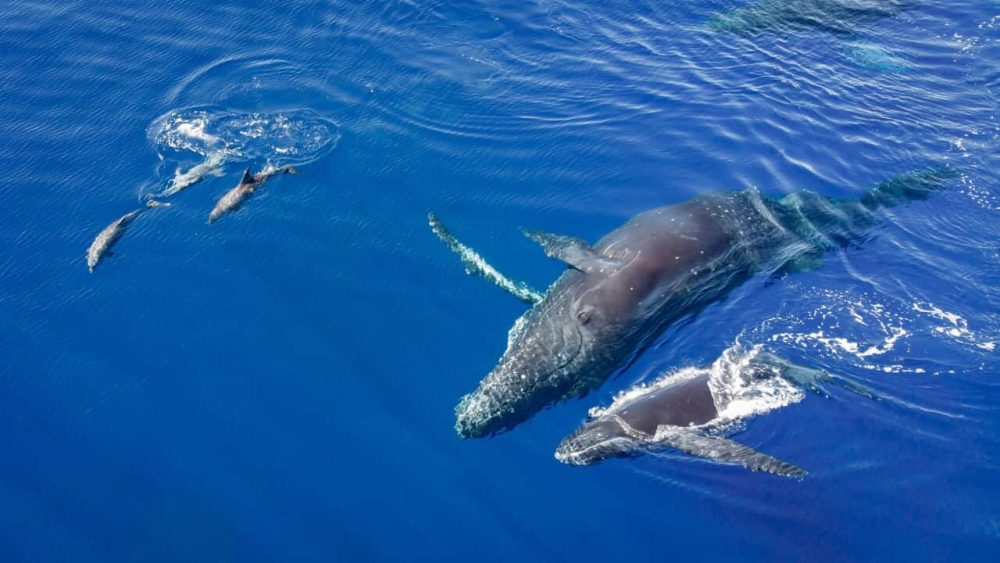Watch This Dolphin Follow a Whale To the Bottom of the Ocean
Advertisements

Pop quiz: what’s the mammal that we love to watch but don’t know nearly enough about? The answer’s not the cat, though our feline friends are quite mysterious. No, we’re talking about dolphins, who tourists love to see joyfully playing across the surface of the ocean.
As it turns out, these dolphins love to play on the bottom of the ocean, too, and with the most unexpected playmates of all: whales! We have new information on these adorable animals courtesy of a wild science experiment. What did these brainy researchers find out about our flippered friends, and what crazy dolphin/whale video did they manage to capture? Keep reading to find out!
The big dolphin mystery

Dolphins are, without a doubt, some of the most playful animals in the world. It’s why they’re so popular tourists…like, when you’re in the middle of the ocean, you can’t help but be charmed when these guys come over with big grins and start playing! Sometimes, they even find unexpected playmates in the form of whales. And this has led to one of the most persistent mysteries in the scientific world.
Researcher Olivia Crawley (as reported by EurekaAlert! ) summed things up nicely: “When you’re out on the water, you often see whales and dolphins interacting and as a scientist, you can’t help but wonder why.” To get to the bottom of things, she and her team ended up analyzing over hundreds videos of whales and dolphins playing together. And their conclusions are guaranteed to shock you!
RELATED: The Largest Animals In the World (You Have to See Them To Believe Them!)
Do whales like to play with dolphins?

At the heart of these scientists’ experiment was a relatively simple question: do whales actually like to play with dolphins? What makes this a good question is the fact that even though dolphins are constantly playing with their larger counterparts, it’s not always clear whether the whales are enjoying it or not. And sometimes, whale reactions that look playful actually mean they are very annoyed!
For example, if you see a whale slap the water with their tail or head, you might think (like most casual observers) that the whale is being playful. But this actually represents very angry behavior on their part. Therefore, the researchers’ experiment was designed to analyze playful interactions between dolphins and whales, with an eye towards figuring out just how much whales are enjoying and participating in the overall experience.
A groundbreaking experiment

The research team decided to extensively study hundreds of recorded interactions between dolphins and whales. This included 425 different whales and 1,570 different dolphins. Some of the videos they analyzed were very striking, including one (that we linked earlier) that began with bottle-nose dolphins following humpback whales across the surface of the water. Eventually, the whales plunge into the ocean depths, and their smaller friends follow until all of them are on the ocean floor.
There, the whales and dolphins seemingly played with each other. How could the scientists tell the whales were having any fun, though? The scientists noted that the whales were engaged in behavior that included presenting their bellies. These magnificent creatures would never do this if they felt threatened or annoyed, so this (and other behaviors) indicate they were engaged in mutual play with the dolphins.
RELATED: Weirdest Animals Ever Caught On Camera
Very surprising findings

Does this mean that whales enjoy playing with dolphins as much as dolphins enjoy playing with whales? Not exactly: based on their extensive observations, the scientists discovered that whales seemed to be engaging in mutual play with dolphins only 25 percent of the time. The rest of the time, the dolphins were just having their own fun. It turns out that humpback whales liked the dolphin interactions more: this particular species engaged in mutual play during 33 percent of the recorded interactions.
Humpbacks also responded to dolphins differently in other ways, including pointing their pectoral fins at the little guys on 172 different occasions. By comparison, grey whales were more likely to roll when dolphins were nearby and southern right whales were more likely to slap the water with their fins.
Overall, the scientists discovered that humpback whales were the least likely species to engage in avoidance behaviors around dolphins. Overall, this study brought the scientific community much closer to understanding some of the complex behavior of these most fascinating animals. And while there is still much to learn, the scientists involved are hopeful that this will serve as the foundation for other researchers to explore even more of the mysteries hidden within the depths of the ocean.
